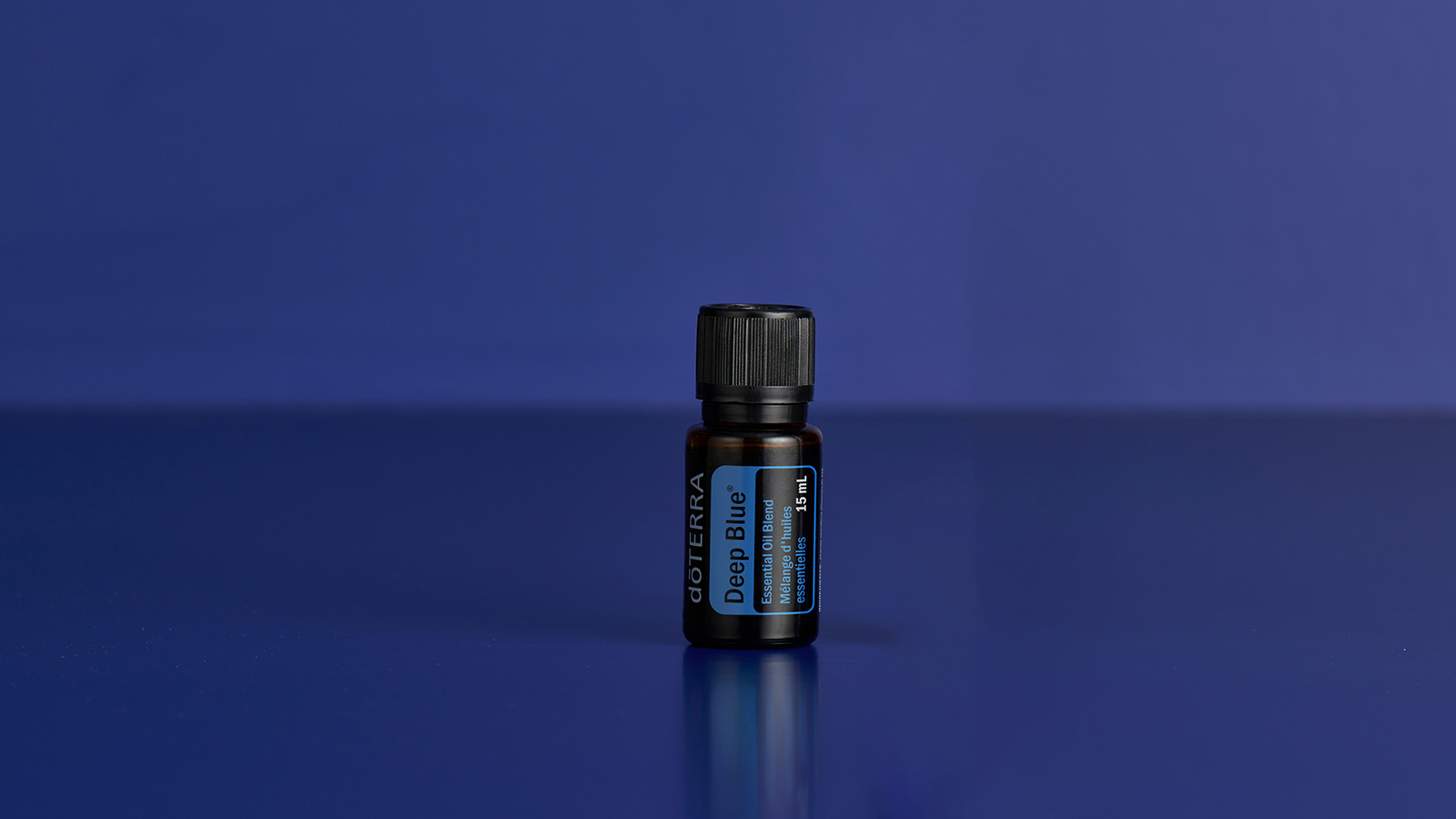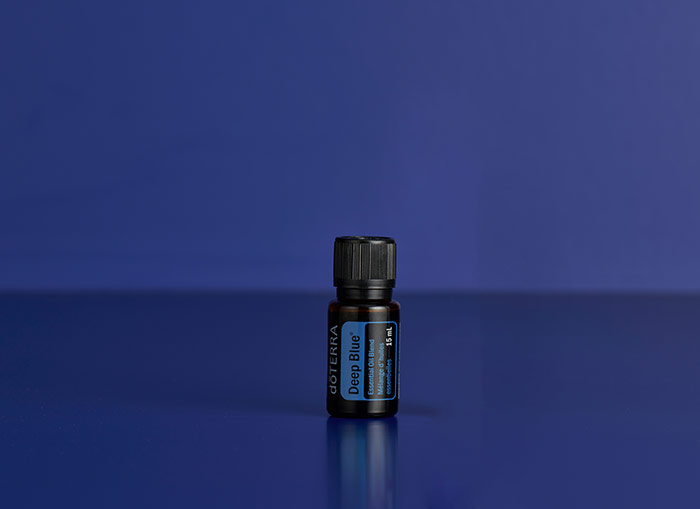Origin: a Latin derivative
meaning "Gift of the Earth."
- Shop
-
Our Story
- View Our Story Home
- Who We Are. . . .
- What We Do. . . .
- Why We Do It. . . .
-
dōTERRA[doh-teh-ruh]


Unpacking the science, synergy, and soothing effects behind doTERRA’s Deep Blue blend—and why it’s a trusted favorite for natural relief.

Dr. Chris Spelman, DDS
doTERRA Wellness Advocate
Science and Medical Education Committee
Deep Blue is aptly named for its characteristic dark blue color and for its ability to provide a deep and lasting soothing effect. It is a perfect balance of essential oils derived from Wintergreen, Camphor, Peppermint, Ylang Ylang, Helichrysum, Blue Tansy, Blue Chamomile, and Osmanthus. The effects of Deep Blue can be sensed immediately after applying it to the skin as it stimulates both warming and cooling sensations. However, the effects are never just skin deep.
Research is showing us the myriad ways these oils are effective. Hopefully, a deeper understanding of how Deep Blue exerts its effects will bring a brand new appreciation of the genius of the formulation, and a better understanding of how and when to use it to its maximum potential.
Constituent Compounds are the Key
There are some key compounds in each of the essential oils in Deep Blue that give us a deeper insight into the powerful effectiveness of this blend. The following is a list of key compounds and the oil they are primarily derived from:
- Menthol (Peppermint)
- Methyl salicylate (Wintergreen)
- Alpha-bisabolol (Blue Chamomile)
- Borneol (Camphor)
- Beta-caryophyllene (Ylang ylang)
- Chamazulene (Blue Tansy, Blue Chamomile)
Each of these constituents is effective on its own. Together, they are a multi-pronged approach.
Additional Benefits
As with many other oils there are the main benefits and uses, but sometimes we get surprise side-benefits and Deep Blue is no different. The blend contains five floral oils (Ylang ylang, Helichrysum, Blue Tansy, Blue chamomile, and Osmanthus) that are well known for their ability to support healthy-looking skin.
Tips on Usage
- Rub on sore muscles after a long day of work (neck, hands, feet/legs, back).
- Add to your favorite lotion for a soothing hand, foot or back massage.
- Rub on muscles or joints prior to working out, especially during high intensity training or when you anticipate the workout causing soreness.
- Apply after workouts to fatigued areas.
- Apply along the jawline and over the jaw joint (directly in front of ears) when these areas are sore. Clenching and grinding the teeth typically occur as a stress response and these actions overwork the jaw joints and muscles, leading to soreness. Applying Deep Blue to these areas can be soothing.
Fun Fact
The dark indigo color of Deep Blue comes from a chemical constituent called chamazulene, which is produced during the distillation of blue tansy and blue chamomile. When the flowers are heated during the distillation process a compound called matricin breaks down and forms chamazulene. Due to its rich color chamazulene has been used to make ink and dyes.
A Personal Note
As a practicing dentist for almost 25 years, I can give a long list of the times when I have struggled with muscular and joint discomfort. It is widely known in the dental industry that most dentists struggle with neck and back issues—many of us have a massage therapist on speed-dial! In my earlier years, I relied on my training in traditional medical modes of treatment and had some successes and many failures in bringing lasting relief, particularly to my neck and back.
But one simple experience with Deep Blue changed the course of my journey with these struggles. After experiencing what I like to call “layers of relief”, my mind was opened to the possibilities and the power of natural solutions. Oils like Deep Blue, Frankincense and Copaiba quickly became staples in my daily routine, and they have been an indispensable aid in building a solid and resilient foundation that will allow me to enjoy serving others for years to come.
Sources
Michel, P.; Olszewska, M.A. Phytochemistry and Biological Profile of Gaultheria procumbens L. and Wintergreen Essential Oil: From Traditional Application to Molecular Mechanisms and Therapeutic Targets. Int. J. Mol. Sci. 2024, 25, 565. https://doi.org/10.3390/ijms25010565
Eddin LB, Jha NK, Goyal SN, Agrawal YO, Subramanya SB, Bastaki SMA, Ojha S. Health Benefits, Pharmacological Effects, Molecular Mechanisms, and Therapeutic Potential of α-Bisabolol. Nutrients. 2022 Mar 25;14(7):1370
Cheng H, An X. Cold stimuli, hot topic: An updated review on the biological activity of menthol in relation to inflammation. Front Immunol. 2022 Nov 9;13:1023746.
Kehili, S.; Boukhatem, M.; Belkadi, A.; Ferhat, M.; Setzer, W. Peppermint (Mentha Piperita L.) Essential Oil As a Potent Anti-Inflammatory, Wound Healing and Anti-Nociceptive Drug. European Journal of Biological Research 2020, 10, 132-149.


